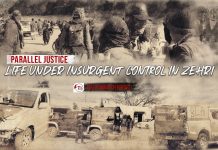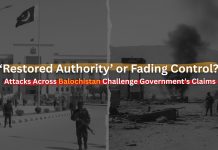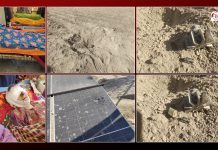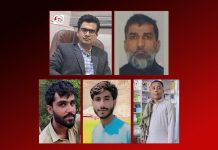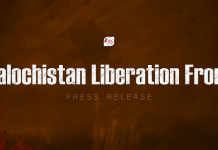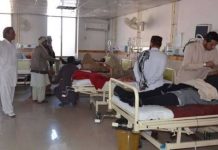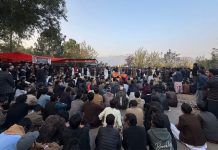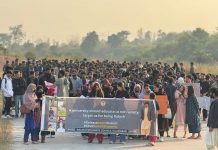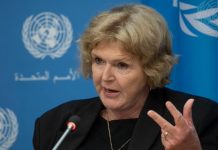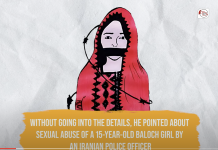Author: Asif Baloch
Between 8 and 8:30pm on 2nd February last year, two different districts of Balochistan, Nushki and Panjgur, rattled with gunfire and explosions. For next many days and months the events that begun that day continued to made headlines across the world.
What happened on February 2?
Two bombers riding on vehicles blasted the main gates of Pakistani army camps in Nushki and Panjgur, after which 14 gunmen managed to enter the camps. Scores of personnel of Pakistani personnel were killed in Noshki, before the attackers were killed the next day, while fierce clashes between the attackers and the Pakistani army continued in Panjgur for three days, for three days the attackers occupied the camp.
Who were the attackers?
Moments after the attack, the Baloch Liberation Army (BLA) claimed responsibility for these two attacks. The spokesperson BLA Jeeyand Baloch claimed that “Fidayees” of BLA Majeed Brigade have attacked Both Nushki and Panjgur Army camps. According to Spokesperson, BLA Fighters captured large parts of both camps and killed several military personnel, in the attack that lasted for three days. It was claimed by the BLA that around two hundred army personnel were killed in this attack and sixteen “Fidayees” of Majeed Brigade were “martyred”.
What was the government’s stance?
Pakistan Army’s Public Relations Department and Pakistan’s then Interior Minister Sheikh Rasheed claimed that all the attackers in both military camps were killed within hours of the attack, while the facts on the ground were quite opposite. Despite claims to have foiled the attacks, a three-day curfew was imposed in Panjgur and Nushki, and intense gunfire and shelling continued as authorities ordered people to stay indoors. Mobile internet and networks were suspended in both areas for the next one week, while the flights of gunship helicopters and spy planes, bomb blasts and gunshots continued in the said areas.
Who is Majeed Brigade?
The Majeed Brigade is a “highly trained fedayeen” unit of the Baloch Liberation Army, consisting of fedayeen and suicide bombers, which has previously carried out several attacks in Balochistan and Karachi.
The name of the Majeed Brigade first came to light when a vehicle loaded with explosives targeted the residence of Shafiq Mengal, the son of former Pakistani minister Mir Naseer Mengal, on December 30, 2011. Thirteen people were killed and thirty-four were injured. Shafiq Mengal was accused of running an armed death squad against Baloch freedom fighters under the alleged patronage of the Pakistani army.
The spokesperson of Baloch Liberation Army, Mereek Baloch, accepted the responsibility of this explosion and said that it was a fidayee attack, which was carried out by Darwish Baloch, a fidayee of Majeed Brigade.
After the attack of Majeed Brigade and a long silence of seven years, the name of Majeed Brigade came up once again when on August 11, 2018, Majeed Brigade targeted a bus of Chinese engineers in Dalbandin area of Balochistan. This attack was carried out by Rehan Baloch, the son of then BLA chief Aslam Baloch.
After this attack, Majeed Brigade targeted the Chinese Consulate in Karachi on November 23 of the same year, while on May 11, 2019, they attacked the five-star hotel ‘Pearl Continental’ in Gwadar. After that, on June 28, 2021, the Pakistan Stock Exchange, located in Karachi, the largest city of Pakistan, was targeted. On August 19, 2021, a convoy of Chinese engineers was attacked in the coastal city of Gwadar in Balochistan. While on April 26, 2022, the first Baloch woman Fidayee Shari Baloch targeted Chinese citizens in Karachi University, where four people including the director of the Confucius Institute were killed.
Reasons behind acceleration in operations of the Majeed Brigade
The Baloch Liberation Army Majeed Brigade carried out its first Fidayee attack in 2011, and after a silence of seven years, it targeted Chinese engineers in 2018, followed by half a dozen Fidayee attacks within three years. How was it able to carry out so many attacks, involving twenty-nine Fidayees.
The main reason for this is attributed to the major changes within the BLA, where non-tribal political leaders like Aslam Baloch and Bashir Zeb Baloch took the reins of the organization, replacing the tribal-based leadership of the organization. A notable change among these changes was the reactivation of the Majeed Brigade. Along with this, there is also the formation of elite units like Fateh Squad and STOS.
Impact of Fidayee attacks on Baloch movement
If we closely observe the Baloch armed movement that has been going on for twenty years, it is evident that the intensity that has been witnessed in this movement during the last five years is not found in the last two decades. The main reason for this is the Fidayee attacks.
The major attacks that have taken place during the last two decades include the killing of four Chinese engineers in Gwadar in 2004, the capture of the Pakistani army camp in Bolan in 2011, and the capture of the Coast Guard camp in the coastal city of Gwadar in 2013 including the kidnapping of the officials at the hands of Baloch fighters.
On the other hand, after the attack on the bus of Chinese engineers in Dalbandin in 2018, the armed movement suddenly intensified. While Baloch armed organizations succeeded in carrying out few major operations in eighteen years, after 2018, around ten camps of the forces were captured, and large-scale attacks were carried out in many other areas.
It has also been seen that Baloch armed organizations have adopted new tactics, targeting local agents in technical attacks, while they have also succeeded in “arresting” serving officers and other personnel of the Pakistan Army during raids. The serving Colonel Laiq Baig of Pakistan Army is also included among those arrested.
Conclusion
After the attacks of BLA Majeed Brigade, on the one hand, there has been an increase in the activities of Baloch armed organizations. At the same time, great changes are seen in the ground conditions in terms of surface politics. In recent times, large-scale public resistance against the atrocities of the Pakistani army and the armed death squads of the state has also been seen, and in the same way, clouds of political unrest are hovering in Balochistan. People and groups belonging to different classes and thoughts of Balochistan are constantly expressing their anger in the form of protests and demonstrations, which are directly benefiting Baloch armed organizations.
Analysts who monitor the Baloch movement and Balochistan believe that the public resistance that emerged after the wounding of a young girl Bramash in Turbat and the killing of her mother were inspired by these attacks. Such incidents have been happening before, but instead of such kind of resistance in public, most of the time silence was seen but in recent days public resistance is seen all the time against such incidents.
Even after a year has passed, the effects of February 2 attacks can still be experienced on Baloch politics and resistance. The attack dispelled the notion that Pakistani forces were invincible in Balochistan. Due to which the angry youth of Balochistan are turning towards Baloch armed organizations.



